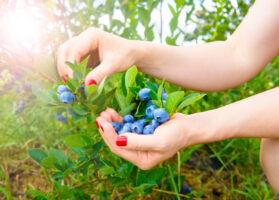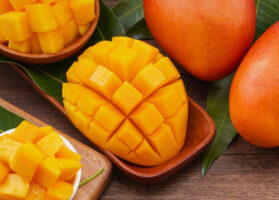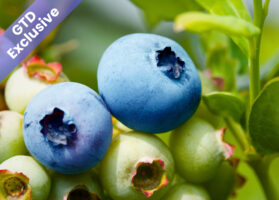Earlier start for British Columbia blueberries
Overview of blueberries from British Columbia in the U.S. market, complemented by charts from Agronometrics. Original published on July 11, 2023.
British Columbia looks to be starting the blueberry harvest in Abbotsford a week early this year. “Last year we started July 10th or so. In the winter, we had some extremely low temperatures and the anticipation was to start later than July 10th,” says Parm Bains, president & CEO of Westberry Farms. “However, the warm weather has helped us catch up and get ahead of last year.” The growers will begin by harvesting Duke variety blueberries.
Last year’s blueberry crop in the province was initially estimated to be about 150 million lbs. though the province ultimately ended up with 175 million lbs. “It’s a bit early to estimate total crop but we are seeing poor to average fruit set on the Duke variety due to hot weather during pollination,” says Bains. Harvest will go until the middle of September.
On the varietal side, there are developments. “Duke is one variety that’s really for the fresh market using mechanical harvesting. The B.C. Blueberry Council–who has a breeding program but that takes 10-15 years to get something commercially viable–is working to get varieties that lend themselves to mechanical harvesting for the fresh market,” says Bains.
This is partly with the state of the domestic labor supply in mind. “It’s nice to hand pick for the fresh market but we’re facing labor challenges so there’s more and more mechanical harvesting being done,” Bains says.

Source: USDA Market News via Agronometrics.
(Agronometrics users can view this chart with live updates here)
Varietal notes
For example, growers are planting more and more Calypso variety of berries in B.C., which comes in at the mid-point for Bluecrop in August. Meanwhile, Elliott blueberries are a variety retailers want less and less. “Aurora is another late variety and it’s doing well but there haven’t been that many plantings of it. We’re still looking for a more ideal late harvest season variety,” says Bains.
As for demand, that remains to be seen. “With COVID, consumers wanted to be healthy and demand for berries went up. Since then, sales have dropped. Consumers are going back to restaurants and have a wider selection of food items to choose from. Plus the inflationary components have kicked in this year so people are buying more apples and bananas than berries,” says Bains.
That puts a watchful eye on pricing. With the process market still ample with product, prices have softened on the processing side. “Peru is also starting to be more active on the fresh and frozen side. B.C. is just starting and the East Coast already has Peruvian berries on the market,” says Bains. “So with the soft frozen market, everyone’s focusing on the fresh market. The concern is it’s going to get flooded and the pricing is already going down even though we’re just starting out. We’re most likely looking at softer pricing on fresh and frozen unless we find the total crop to be below average.”
The News in Charts is a collection of stories from the industry complemented by charts from Agronometrics to help better tell their story.
Access the original article with this (Link)






